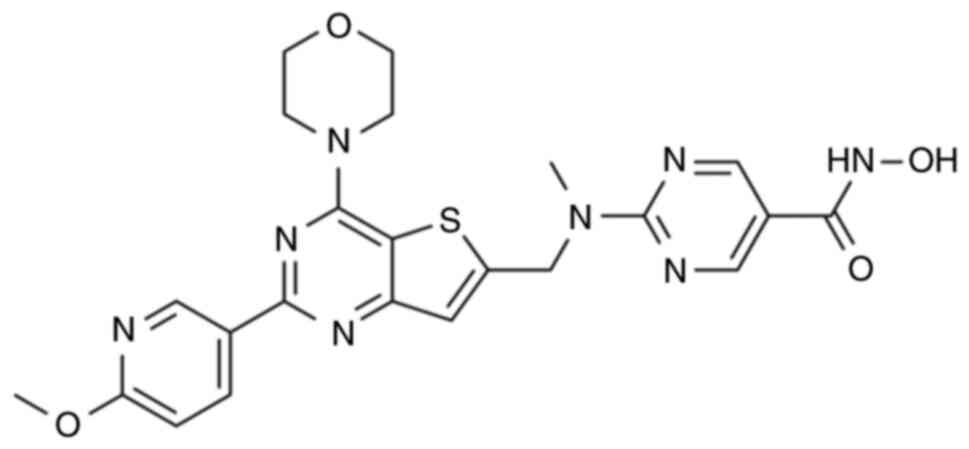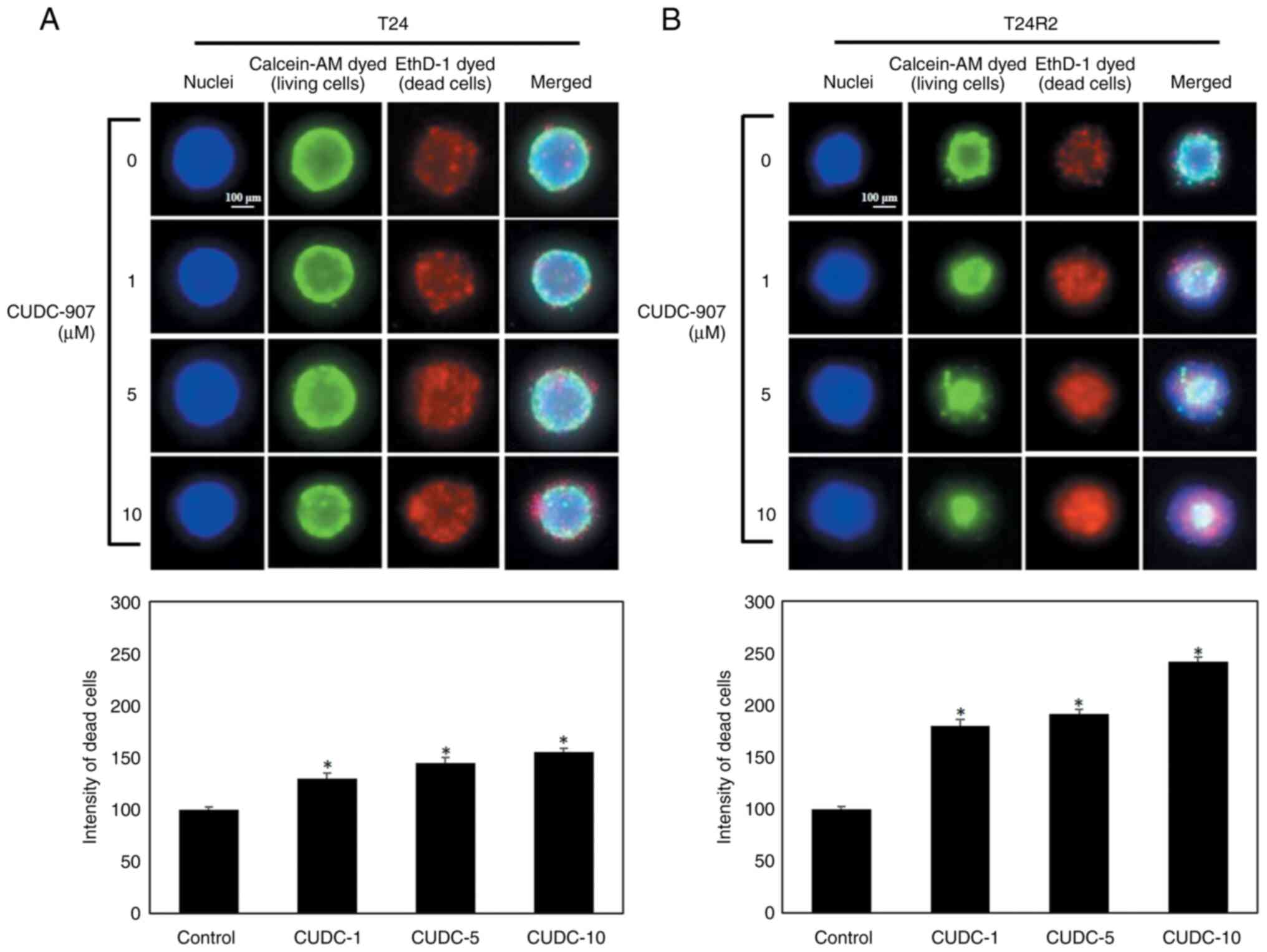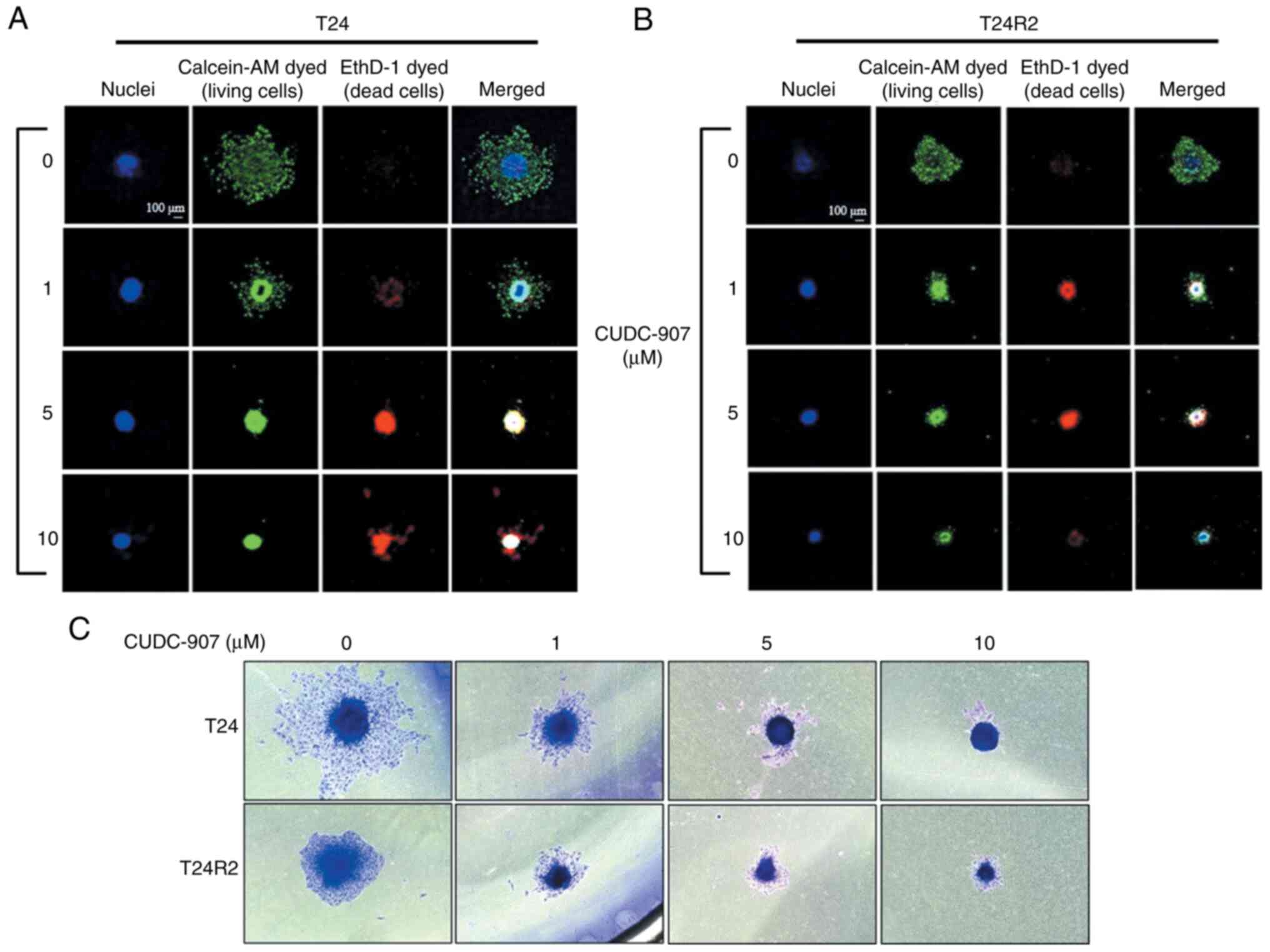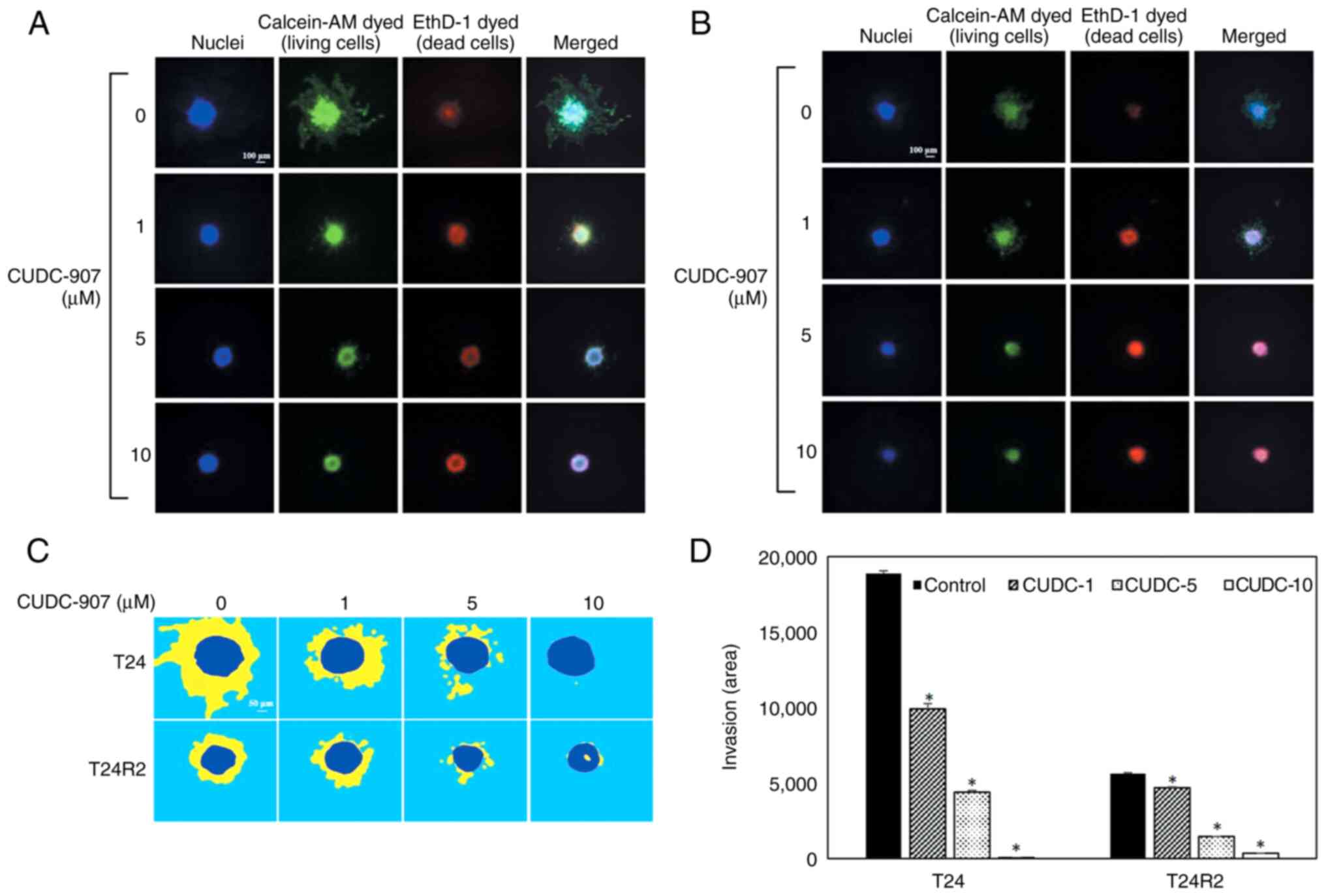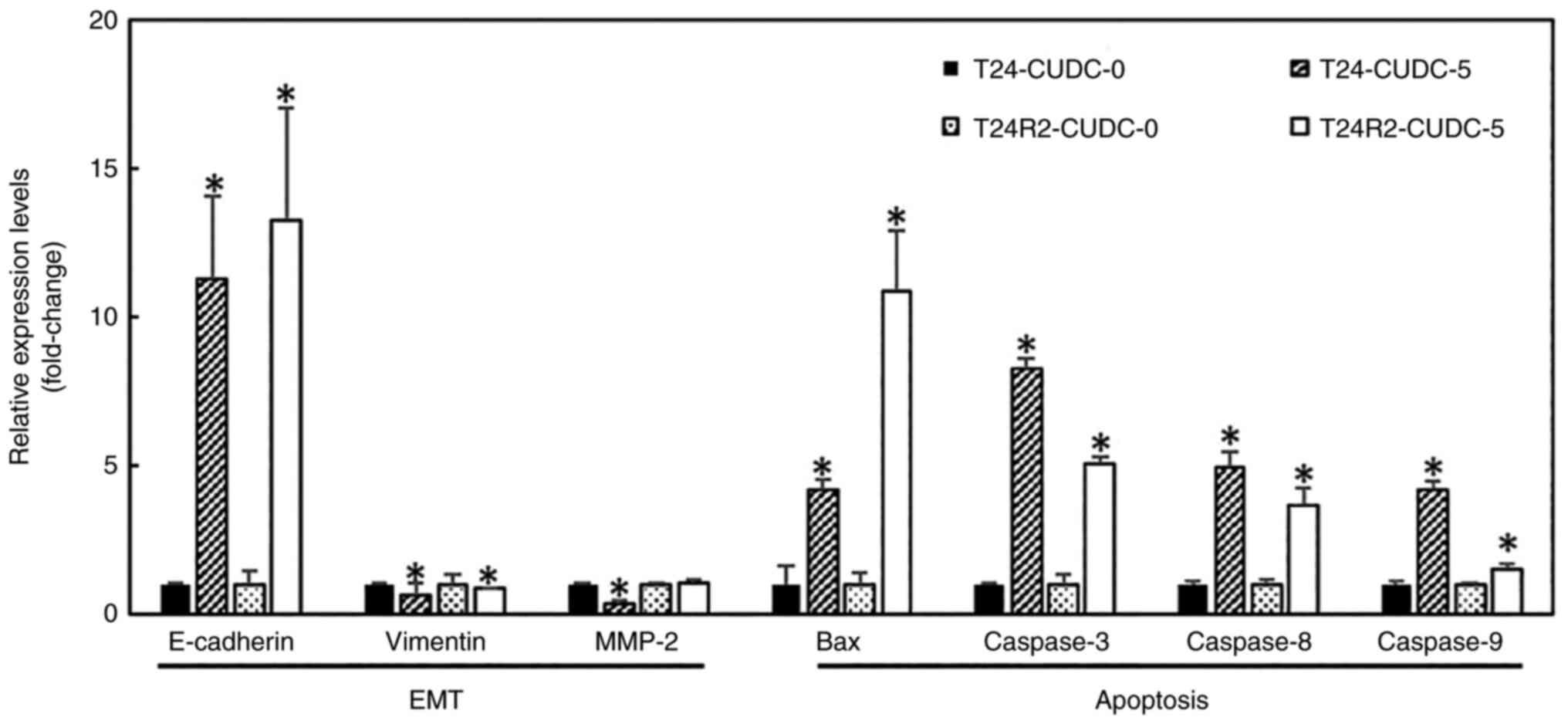|
1
|
Liu X, Lin H, Song J, Zhang T, Wang X,
Huang X and Zheng C: A: Novel SimpleDrop Chip for 3D spheroid
formation and anti-cancer drug assay. Micromachines (Basel).
12:6812021. View Article : Google Scholar : PubMed/NCBI
|
|
2
|
Jensen C and Teng Y: Is it time to start
transitioning from 2D to 3D cell culture? Front Mol Biosci.
7:332020. View Article : Google Scholar : PubMed/NCBI
|
|
3
|
Gendre DAJ, Ameti E, Karennovics W,
Perriaz-Mayer N, Triponez F and Serre-Beinier V: Optimization of
tumor spheroid model in mesothelioma and lung cancers and
anti-cancer drug testing in H2052/484 spheroids. Oncotarget.
12:2375–2387. 2021. View Article : Google Scholar : PubMed/NCBI
|
|
4
|
Reddy KRK, Piyarathna DWB, Kamal AHM,
Putluri V, Ravi SS, Bollag R, Rerris MK, Lotan Y and Putluri N:
Lipidomic profiling identifies a novel lipid signature associated
with ethnicity-specific disparity of bladder cancer. Metabolites.
12:5442022. View Article : Google Scholar
|
|
5
|
Miyazaki J and Nishiyama H: Epidemiology
of urothelial carcinoma. Int J Urol. 24:730–734. 2017. View Article : Google Scholar : PubMed/NCBI
|
|
6
|
Facchini G, Cavaliere C, Romis L, Mordente
S, Facchini S, Iovane G, Capasso M, D'Errico D, Liguori C, Formato
R, et al: Advabced/metastatic bladder cancer: Current status and
future directions. Eur Rev Med Pharmacol Sci. 24:11536–11552.
2020.PubMed/NCBI
|
|
7
|
Ramaiah MJ, Tangutur AD and Manyam RR:
Epigenetic modulation and understanding of HDAC inhibitors in
cancer therapy. Life Sci. 277:1195042021. View Article : Google Scholar : PubMed/NCBI
|
|
8
|
Hesham HM, Lasheen DS and Abouzid KAM:
Chimeric HDAC inhibitors: Comprehensive review on the HDAC-based
strategies developed to combat cancer. Med Res Rev. 38:2058–2109.
2018. View Article : Google Scholar : PubMed/NCBI
|
|
9
|
Giannopoulou AF, Velentzas AD,
Konstantakou EG, Avgeris M, Katarachia SA, Papandreou NC, Kalavros
NI, Mpakou VE, Iconomidou V, Anastasiadou E, et al: Revisiting
histone deacetylases in human tumorigenesis: The paradigm of
urothelial bladder cancer. Int J Mol Sci. 20:12912019. View Article : Google Scholar : PubMed/NCBI
|
|
10
|
Ryu H, Jin H, Ho JN, Bae J, Lee E, Lee SE
and Lee S: Suberoylanilide hydroxamic acid can re-sensitize a
cisplatin-resistant human bladder cancer. Biol Pharm Bull.
42:66–72. 2019. View Article : Google Scholar : PubMed/NCBI
|
|
11
|
Sathe A and Nawroth R: Targeting the
PI3K/AKT/mTOR pathway in bladder cancer. Methods Mol Biol.
1655:335–350. 2018. View Article : Google Scholar : PubMed/NCBI
|
|
12
|
Li X, Liu H, Lv C, Du J, Lian F, Zhang S,
Wang Z and Zeng Y: Gypenoside-induced apoptosis via the
PI3K/Akt/mTOR signaling pathway in bladder cancer. Biomed Res Int.
2022:93045522022.PubMed/NCBI
|
|
13
|
Hu C, Xia H, Bai S, Zhao J, Edwards H, Li
X, Yang Y, Lyu J, Wang G, Zhan Y, et al: CUDC-907, a novel dual
PI3K and HDAC inhibitor, in prostate cancer: Antitumour activity
and molecular mechanism of action. J Cell Mol Med. 24:7239–7253.
2020. View Article : Google Scholar : PubMed/NCBI
|
|
14
|
Kotian S, Zhang L, Boufraqech M, Gaskins
K, Gara SK, Quezado M, Nilubol N and Kebebew E: Dual inhibition of
HDAC and tyrosine kinase signaling pathways with CUDC-907 inhibits
thyroid cancer growth and metastases. Clin Cancer Res.
23:5044–5054. 2017. View Article : Google Scholar : PubMed/NCBI
|
|
15
|
Li ZJ, Hou YJ, Hao GP, Pan XX, Fei HR and
Wang FZ: CUDC-907 enhances TRAIL-induced apoptosis through
upregulation of DR5 in breast cancer cells. J Cell Commun Signal.
14:377–387. 2020. View Article : Google Scholar : PubMed/NCBI
|
|
16
|
Byun SS, Kim SW, Choi H, Lee C and Lee E:
Augmentation of cisplatin sensitivity in cisplatin-resistant human
bladder cancer cells by modulating glutathione concentrations and
glutathione-related enzyme activities. BJU Int. 95:1086–1090. 2005.
View Article : Google Scholar : PubMed/NCBI
|
|
17
|
Vinci M, Box C, Zimmermann M and Eccles
SA: Tumor spheroid-based migration assays for evaluation of
therapeutic agents. Methods Mol Biol. 986:253–266. 2013. View Article : Google Scholar : PubMed/NCBI
|
|
18
|
Pfeffer CM and Singh ATK: Apoptosis: A
target for anticancer therapy. Int J Mol Sci. 19:4482018.
View Article : Google Scholar : PubMed/NCBI
|
|
19
|
Mahmoudian RA, Gharaie ML, Abbaszadegan
MR, Alasti A, Forghanifard MM, Mansouri A and Gholamin M: Crosstalk
between MMP-13, CD44, and TWIST1 and its role in regulation of EMT
in patients with esophageal squamous cell carcinoma. Mol Cell
Biochem. 476:2465–2478. 2021. View Article : Google Scholar : PubMed/NCBI
|
|
20
|
Ringuette-Goulet C, Bolduc S and Pouliot
F: Modeling human bladder cancer. World J Urol. 36:1759–1766. 2018.
View Article : Google Scholar : PubMed/NCBI
|
|
21
|
Edmondson R, Broglie JJ, Adcock AF and
Yang L: Three-dimensional cell culture systems and their
applications in drug discovery and cell-based biosensors. Assay
Drug Dev Technol. 12:207–218. 2014. View Article : Google Scholar : PubMed/NCBI
|
|
22
|
Filipiak-Duliban A, Brodaczewska K,
Kajdasz A and Kieda C: Spheroid culture differentially affects
cancer cell sensitivity to drugs in melanoma and RCC models. Int J
Mol Sci. 23:11662022. View Article : Google Scholar : PubMed/NCBI
|
|
23
|
Kim MJ, Chi BH, Yoo JJ, Ju YM, Whang YM
and Chang IH: Structure establishment of three-dimensiional (3D)
cell culture printing model for bladder cancer. PLoS One.
14:e02236892019. View Article : Google Scholar : PubMed/NCBI
|
|
24
|
Mittal V: Epithelial mesenchymal
transition in tumor metastasis. Annu Rev Pathol. 13:395–412. 2018.
View Article : Google Scholar : PubMed/NCBI
|
|
25
|
Pastushenko I and Blanpain C: EMT
transition states during tumor progression and metastasis. Trends
Cell Biol. 29:212–226. 2018. View Article : Google Scholar : PubMed/NCBI
|
|
26
|
Ziaran S, Harsanyi S, Bevizova K, Novakova
ZV, Trebaticky B, Bujdak P, Balbavy S and Danisovic L: Expression
of E-cadherin, Ki-67, and p53 in urinary bladder cancer in relation
to progression, survival, and recurrence. Eur J Histochem.
64:30982020. View Article : Google Scholar : PubMed/NCBI
|
|
27
|
Yeung K and Yang J: Epithelial-mesenchymal
transition in tumor metastasis. Mol Oncol. 11:28–39. 2017.
View Article : Google Scholar : PubMed/NCBI
|
|
28
|
Shimizu Y, Tamada S, Kato M, Takeyama Y,
Fujioka M, Kakehashi A, Nakatani T, Wanibuchi H and Gi M: Steroid
sulfatase promotes invasion through epithelial-mesenchymal
transition and predicts the progression of bladder cancer. Exp Ther
Med. 16:4463–4470. 2018.PubMed/NCBI
|
|
29
|
McConkey D, Choi W, Marquis L, Martin F,
Williams MB, Shah J, Svatek R, Das A, Adam L and Kamat A: Role of
epithelial-to-mesenchymal transition (EMT) in drug sensitivity and
metastasis in bladder cancer. Cancer Metastasis Rev. 28:335–344.
2009. View Article : Google Scholar : PubMed/NCBI
|
|
30
|
Zhang W, Zhang Y, Tu T, Schmull S, Han Y,
Wang W and Li H: Dual inhibition of HDAC and tyrosine kinase
signaling pathways with CUDC-907 attenuates TGFβ1 induced lung and
tumor fibrosis. Cell Death Dis. 11:7652020. View Article : Google Scholar : PubMed/NCBI
|
|
31
|
Pistritto G, Trisciuoglio D, Ceci C,
Garufi A and D-Orazi G: Apoptosis as anticancer mechanism: Function
and dysfunction of its modulators and targeted therapeutic
strategies. Aging (Albany NY). 8:5603–619. 2016.PubMed/NCBI
|
|
32
|
Lopez J and Tait SW: Mitochondrial
apoptosis: Killing cancer using the enemy within. Br J Cancer.
112:957–962. 2015. View Article : Google Scholar : PubMed/NCBI
|
|
33
|
Gao J, Tian X, Yan X, Wang Y, Wei J, Wang
X, Yan X and Song G: Selenium exerts protective effects against
fluoride-induced apoptosis and oxidative stress and altered the
expression of Bcl-2/caspase family. Biol Trace Elem Res.
199:682–692. 2021. View Article : Google Scholar : PubMed/NCBI
|
|
34
|
Ishikawa C and Mori N: The role of
CUDC-907, a dual phosphoinositide-3 kinase and histone deacetylase
inhibitor, in inhibiting proliferation of adult T-cell leukemia.
Eur J Haematol. 105:763–772. 2020. View Article : Google Scholar : PubMed/NCBI
|















